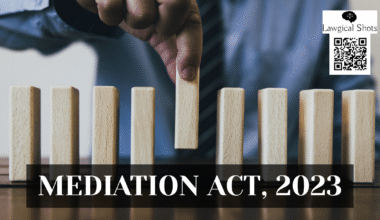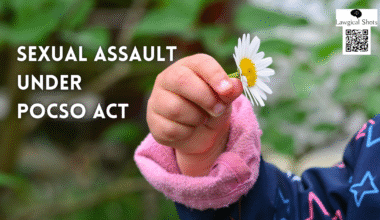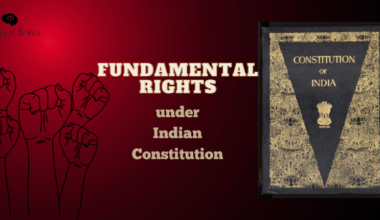“Naam Mein Kya Rakha Hai?” – Ask a Brand That Got Copied.
It took them years and years to build a brand name, and someone just took minutes to copy it . This is the imaginary story of the brand ‘PineApple ‘, a luxury bathtub manufacturer and retailer based in Gujarat, which started as a niche brand focused on providing beautiful and quality Bathtubs with satisfied customers over the years. However, it turned into a business with losing reputation, customers dropping the orders, trust dropped, a crisis not thought upon. It was all because a person sitting in a cyber cafe thought it was okay to create a website using the same name, with similar design language and began selling cheap knockoffs.
That’s when PineApple realized building a business is one thing; however, protecting it is a whole another battle. A battle they didn’t know they had to fight until now.
So let’s walk through the law that could help PineApple get its identity back and in the process, let’s learn how you can protect yours too.
What protects your brand name, logo, or tagline?
The answer to the question is Trade Marks Act, 1999.
An Act to amend and consolidate the law relating to trade marks, to provide for registration and better protection of trade marks for goods and services and for the prevention of the use of fraudulent marks. (Stated in The Trade Marks Act, No. 47 of 1999, Acts of Parliament, 1999 (India), available here.)
In simple terms, it is the law that gives you the right to register, own, and legally protect your brand’s name, logo, tagline, shape of products, and even colour combinations as long as they help your product or service stand out from others in the market.
Now let’s break down the Act in a simple way, just like you’d explain it to someone new to business.
What is the Structure of the Trade Marks Act ?
The Trade Marks Act, 1999 is made up of:
- 13 Chapters
- 159 Sections
- 1 Schedule
Each Part focuses on a different aspect of trade marks. Here’s a quick view of the same:
| Chapter | Sections | What is covered in Trade Marks Act? |
| Ⅰ | 1-2 | Introduces the Act and defines important terms. |
| II | 3-17 | Deals with the Trade Marks Register and conditions for registration. |
| III | 18-26 | Explains the procedure and duration for registering trade marks. |
| IV + [IVA] | 27-36 | Describes the legal effects and rights of a registered trade mark. + Provides rules for international registration under the Madrid Protocol. |
| V | 37-45 | Covers rules for transferring ownership of trade marks (assignment & transmission). |
| VI | 46-56 | Deals with how trade marks are used and how registered users are managed. |
| VII | 57-60 | Allows correction or rectification of mistakes in the Trade Mark Register. |
| VIII | 61-68 | Provides rules for collective marks used by groups/associations. |
| IX | 69-78 | Explains how certification marks (quality marks) are registered and enforced. |
| X | 79-82 | (Special provisions for textile goods — now omitted) |
| XI | 83-100 | Constitutes the Appellate Board and details its powers and appeal procedures. |
| XII | 101-121 | Lists offences, penalties, and criminal procedures related to trade marks. |
| XIII | 122-159 | Covers miscellaneous matters like legal procedures, powers of the Registrar, suits, and repeal. |
| Schedule | – | Gives classification for goods and services used in trade mark registration. |
Now the question arises – Where does the Trade Marks Act lay down its Procedure for registration of Trade marks in Inda? As seen in the above table, the answer to the question is
PART III – titled “Procedure for and Duration of Registration”. It lays out a clear procedure for registering a trademark in Sections 18 to 26, starting from application and ending with renewal or removal.
Trade Mark Registration
Here is the step-by-step procedure explained in simple terms with reference to the Trade Marks Act, 1999.
- Apply to Register
- If you own or plan to use a brand name or logo, you can apply to the Registrar.
- One form can include multiple categories (like cosmetics + clothing), but you’ll pay for each.
- Send It to the Right Office
- File the application in the Trade Marks Registry that matches your business address.
- If you don’t have a business in India, use your service address here.
- Registrar Reviews Your Form
- The Registrar can accept, reject, or ask for changes.
- If rejected or accepted with conditions, they must explain why.
- Registrar Can Change Their Mind
- Even if accepted, the Registrar can withdraw it later if they find something wrong.
- You’ll get a chance to explain your side first.
- Application Gets Published (Advertised)
- If accepted, your trademark is advertised publicly so others can see and object if needed.
- People Can Oppose the Registration
- Anyone can oppose it within 4 months of advertisement.
- If that happens, you’ll get a copy and must reply within 2 months.
- Both sides can send in evidence and may get a hearing.
- The Registrar will decide whether to register the mark or not.
- Registrar Registers the Trademark
- If no one opposes, or the decision goes in your favour, the Registrar registers it.
- The trademark gets registered from the date you first applied.
- You’ll receive a certificate.
- Fixing Mistakes
- Small mistakes in the certificate or register can be fixed by the Registrar.
- Joint Ownership (Rare Cases)
- Two or more people can register a trademark together only if they’re both connected to the brand and plan to use it jointly.
- How Long Is It Valid?
- Registration lasts for 10 years.
- You can renew it again and again for 10 years each time by paying a fee.
- If You Forget to Renew
- You’ll get a reminder before expiry.
- If you miss the date, you can still renew within 6 months by paying extra.
- If removed from the register, you can restore it within 1 year.
- Protection After Removal
- Even if your trademark is removed, for 1 year, it will still block others from registering a similar mark unless it wasn’t used recently or there’s no risk of confusion.
Does the Trade Marks Act create any authority ?
AND YES the answer is a 100% yes it does create an entire system that handles your application and not just explaining your rights .
As per:
- Section 3 – The Registrar of Trade Marks is appointed by the Central Government. This is the top officer who controls all matters related to trade marks.
- Section 5 – It sets up the Trade Marks Registry, headquartered in Mumbai, with other offices in India.
- Section 6 – It creates the Register of Trade Marks, where all registered trade marks are officially recorded.
These authorities ensure that trade marks are properly recorded, checked, published, and enforced. Hence , PineApple can save its identity and regain everything it lost with proper procedure as laid down by this act and you can too.
So, the next time someone says:“Naam mein kya rakha hai?” Tell them : everything, especially when the law protects it.
Our intern, Ms. Pari Mirani has come up with the creative explanation of how the Trade Marks Act can help protect brands. She has been assisting the team in bringing informational legal blogs.








